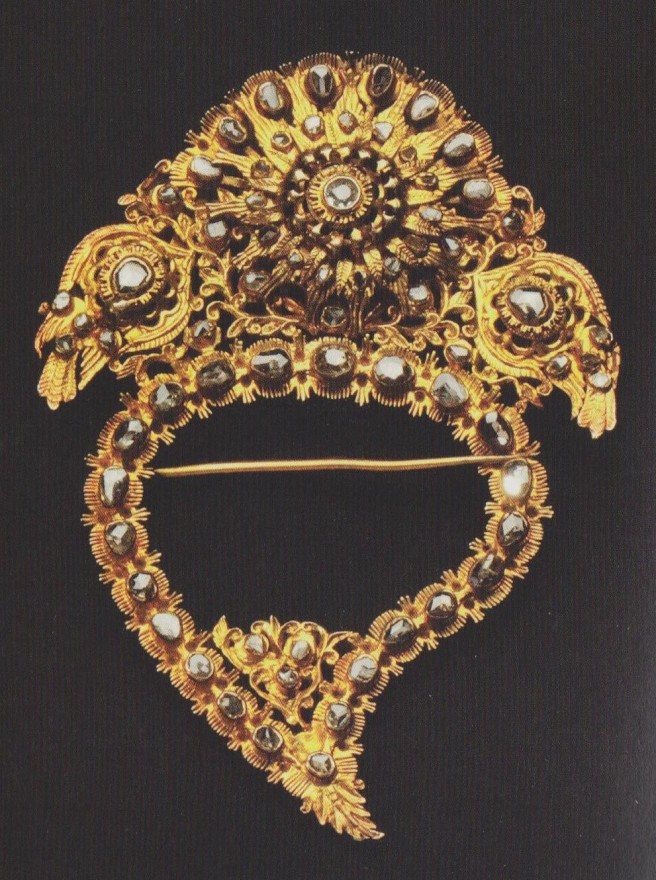
Above: a kerosang thoe, a brooch worn by Peranakan women and designed to symbolise a peach, an important motif in Baba Nyonya culture (Tong 2014, p. 120).
The Peranakan-Chinese people are an ethnic group descended from mixed marriages between Chinese immigrant men and local Indonesian and Malay women in the 19th century (Encyclopædia Britannica 2014). In Malaysia and Singapore, Peranakans are also referred to as Straits-Chinese, named for the Strait of Melacca, where settlements in Singapore, Penang, and Melacca were established. The men, known as Baba, and the women, Nyonya, developed their own unique culture over time, “with influences from the Malay Archipelago, Asia, China, Europe, Anglo-Indian, and Victorian England” (Tong 2014, p. 15).
Jewellery plays an important role in Peranakan culture, particularly during weddings, but also in other ceremonies and events, along with everyday life as a means of denoting status (Lotoski 2009). Gold is considered to be the “foundation” (Tong 2014, p. 15) of jewellery pieces and the base on which precious stones and other features are placed. Nonetheless, the gold is always intricately carved in a manner not dissimilar to the popular art nouveau style of the West (Carpenter & Richter 2011, p. 340).
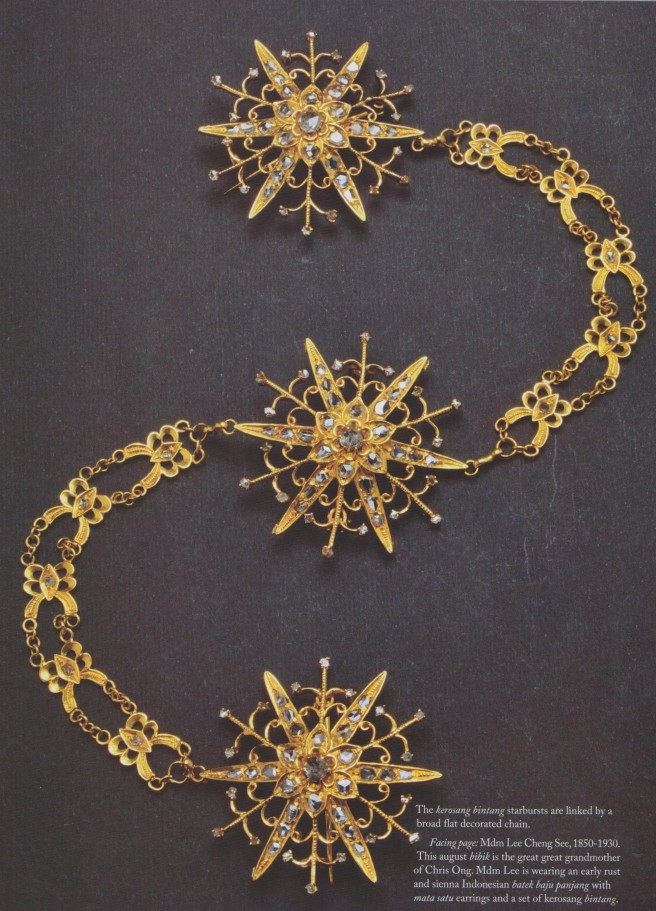
Above: a kerosang bintang brooch, designed in the form of several stars (Tong 2014, p. 69)
Pieces are designed in accordance with a number of popular motifs in Peranakan culture, such as the dragon, phoenix, waterfalls, flowers, stars, and fruit such as grapes and peaches, with each symbol having a particular meaning and significance relative to both the wearer and the occasion (Tong 2014, p. 36 & 110-115).
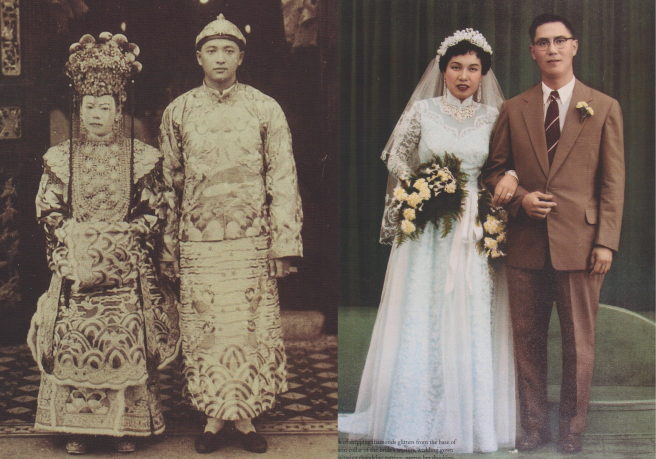
Above: a Peranakan couple (left) wearing traditional Chinese wedding apparel whilst another (right) wears Western garments. Over the course of a multiple day wedding, Baba Nyonya couples would wear a number of different outfits (Tong 2014, p. 30 & 74).
Peranakan weddings are renowned for their grandness and pageantry, with some ceremonies taking up to twelve days, or even thirty for the wealthiest families (Tong 2014, p. 25). The Baba-Nyonya people considered themselves thoroughly anglicised and were proud to be the “Queen’s Chinese” (Tong 2014, p. 119). Baba grooms and Nyonya brides, over the course of a wedding, would alternate at times between traditional Chinese clothing and Western dress styles (Tong 2014, p. 33), with Baba suits generally adorned with a small number of jewellery pieces in a similar style to the Nyonya, whilst she wore a larger number of pieces and in a more audacious style.
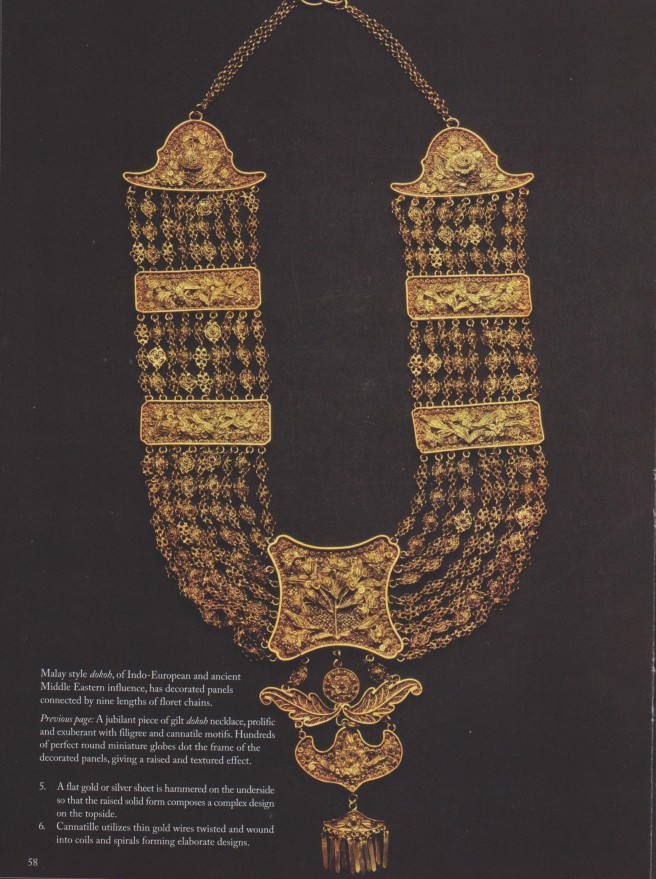
Above: a dokoh, an intricate gold necklace worn by Nyonya brides (Tong 2014, p. 58)
Nyona brides would wear a number of Peranakan jewellery items over the course of their wedding, including necklaces, tiaras, cuffs, brooches, hair pins, rings, and earrings. Some of the pieces unique to Baba Nyonya culture include the dokoh, a large, elaborate necklace made with gold plates and chains , and the rantey, a necklace worn with the dokoh, intended to create a different visual interest, consisting of a large quantity of gold orbs of similar or varying sizes and are worn several at a time (Tong 2014, p. 56-61). Perhaps the most iconic shape in Peranakan jewellery is that of the kerosang thoe (seen top), a set of brooches used to fasten clothing with the mother or ibu brooch (Tong 2014, p. 63) taking a paisley shape, designed to represent a peach, a symbol of “marriage, spring, justice, and longevity” (Tong 2014, p. 115), which points to the left, to the heart of the wearer.
References:
Carpenter, B. & Richter, A. 2011, Gold Jewellery of the Indonesian Archipelago, Editions Didier Millet, Singapore.
Encyclopædia Britannica 2014, Peranakan, Encyclopædia Britannica, United Kingdom, viewed 24 April 2016, <http://www.britannica.com/topic/Peranakan>.
Lotoski, A. 2009. ‘Baba Bling: The Peranakans and Their Jewellery’, PASSAGE, July/August, pp. 14.
Tong, L. 2014, Straits Chinese Gold Jewellery, Pinang Peranakan Mansion Sdn Bhd, Penang, Malaysia.
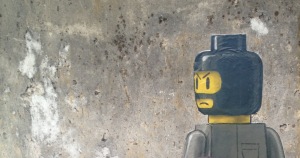
I didn’t think much into the meaning behind jewellery in Peranakan culture, but this has definitely given me an informative insight. It’s something very unique and specialised to their culture. These jewellery pieces are so fine in detail, it would be great to learn more about their craftsmanship.
LikeLiked by 1 person